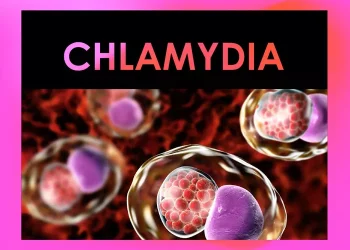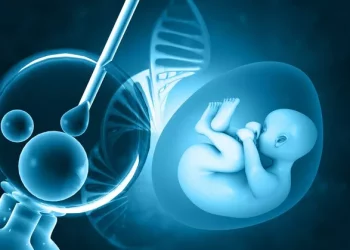Fatty liver disease is increasingly prevalent in the modern world, particularly in developed countries. This condition, characterized by the accumulation of fat in liver cells, has significant implications for overall health. While traditionally associated with obesity, type 2 diabetes, and metabolic syndrome, emerging evidence suggests a potential link between fatty liver disease and female infertility. This article explores this connection, examining how fatty liver might influence reproductive health in women.
See Also: The Link Between Fatty Liver Disease and Infertility in Males
Understanding Fatty Liver Disease
Fatty liver disease is classified into two main types: alcoholic fatty liver disease (AFLD) and non-alcoholic fatty liver disease (NAFLD). AFLD is caused by excessive alcohol consumption, while NAFLD occurs in individuals who drink little or no alcohol. NAFLD is more common and is often linked to obesity, insulin resistance, and metabolic syndrome.
Pathophysiology of Fatty Liver Disease
In NAFLD, the liver stores excessive fat due to an imbalance between lipid acquisition and removal. This can lead to liver inflammation, fibrosis, and ultimately, non-alcoholic steatohepatitis (NASH). NASH is a more severe form of NAFLD that can progress to cirrhosis and liver failure.
Prevalence and Risk Factors
NAFLD is one of the most common liver diseases worldwide, affecting approximately 25-30% of the global population. Risk factors include obesity, type 2 diabetes, dyslipidemia, and hypertension. Genetic predisposition and certain medications also play a role in the development of NAFLD.
Infertility in Females
Infertility is defined as the inability to conceive after one year of regular, unprotected intercourse. It affects about 10-15% of couples worldwide. Female infertility can result from various factors, including ovulatory disorders, tubal blockage, uterine abnormalities, and hormonal imbalances.
Common Causes of Female Infertility
Ovulatory Disorders: Polycystic ovary syndrome (PCOS) is a leading cause of ovulatory dysfunction. Thyroid disorders and hyperprolactinemia can also impair ovulation.
Tubal Factors: Damage or blockage of the fallopian tubes due to infections, endometriosis, or previous surgeries can prevent the egg and sperm from meeting.
Uterine Factors: Uterine fibroids, polyps, and congenital abnormalities can interfere with implantation and pregnancy.
Hormonal Imbalances: Hormones play a crucial role in regulating the menstrual cycle and ovulation. Imbalances can disrupt this process, leading to infertility.
Linking Fatty Liver Disease to Female Infertility
Recent research suggests that fatty liver disease, particularly NAFLD, may be associated with female infertility. Several mechanisms could explain this relationship.
1. Insulin Resistance and Hyperinsulinemia
Insulin resistance is a hallmark of NAFLD. It is also a key feature of PCOS, a common cause of infertility. Hyperinsulinemia can disrupt the normal function of the ovaries, leading to anovulation (lack of ovulation) and menstrual irregularities. Insulin resistance and high insulin levels can also exacerbate hyperandrogenism, a condition characterized by elevated male hormones, which further impairs fertility.
2. Inflammatory Pathways
Chronic inflammation is a central component of NAFLD progression. Pro-inflammatory cytokines, such as tumor necrosis factor-alpha (TNF-α) and interleukin-6 (IL-6), are elevated in individuals with NAFLD. These cytokines can disrupt ovarian function and impair follicular development, leading to infertility.
3. Hormonal Imbalances
NAFLD can affect liver function, impairing the metabolism of sex hormones. The liver plays a crucial role in the clearance of estrogen and androgen. Dysfunctional liver metabolism can lead to hormonal imbalances, such as elevated estrogen or testosterone levels, which can disrupt the menstrual cycle and ovulation.
4. Oxidative Stress
Oxidative stress, a condition characterized by excessive reactive oxygen species (ROS) and inadequate antioxidant defenses, is prevalent in NAFLD. Oxidative stress can damage ovarian cells and impair their function, contributing to infertility.
Clinical Evidence and Studies
Several clinical studies and investigations have explored the link between NAFLD and female infertility.
1. Epidemiological Studies
Epidemiological studies have shown a higher prevalence of NAFLD in women with PCOS and other infertility disorders. For example, a study published in the Journal of Hepatology found that women with PCOS had a significantly higher incidence of NAFLD compared to controls. This suggests a potential shared pathophysiological mechanism between these conditions.
2. Cross-Sectional Studies
Cross-sectional studies have investigated the association between liver fat content and reproductive hormones. One study found that women with NAFLD had higher levels of androgens and insulin resistance, both of which are linked to infertility. Another study reported that women with NAFLD had a higher prevalence of menstrual irregularities and anovulation.
3. Mechanistic Studies
Mechanistic studies using animal models and in vitro experiments have provided insights into how NAFLD might cause infertility. These studies have demonstrated that fatty liver can impair ovarian function, disrupt follicular development, and alter hormone production, all of which can contribute to infertility.
Potential Interventions and Management Strategies
Given the potential link between NAFLD and female infertility, managing fatty liver disease may help improve reproductive outcomes. Several strategies can be considered:
1. Lifestyle Modifications
Lifestyle changes are the cornerstone of NAFLD management. Weight loss through diet and exercise can significantly reduce liver fat content and improve insulin sensitivity. A balanced diet rich in fruits, vegetables, lean proteins, and whole grains, along with regular physical activity, can help achieve and maintain a healthy weight.
2. Medical Treatments
In some cases, medications may be necessary to manage NAFLD and its associated conditions. Insulin sensitizers, such as metformin, can improve insulin resistance and ovulatory function in women with PCOS and NAFLD. Other medications targeting lipid metabolism and inflammation, such as pioglitazone and vitamin E, may also be beneficial.
3. Monitoring and Follow-Up
Regular monitoring of liver function, metabolic parameters, and reproductive hormones is essential in women with NAFLD and infertility. Ultrasound or MRI can assess liver fat content and fibrosis, while blood tests can evaluate insulin resistance, lipid profiles, and hormonal levels.
4. Multidisciplinary Approach
A multidisciplinary approach involving hepatologists, endocrinologists, and reproductive specialists can provide comprehensive care for women with NAFLD and infertility. Collaboration among these specialists can ensure that both liver health and reproductive function are optimized.
Future Research Directions
While current evidence suggests a link between NAFLD and female infertility, further research is needed to fully understand the mechanisms and implications of this association. Future studies should focus on:
1. Longitudinal Studies
Longitudinal studies can provide more definitive evidence of the causal relationship between NAFLD and infertility. These studies should track liver health and reproductive outcomes over time to determine if improving NAFLD can enhance fertility.
2. Molecular Mechanisms
More research is needed to elucidate the molecular mechanisms underlying the link between NAFLD and infertility. Understanding how liver fat accumulation affects ovarian function and hormone production can help identify new therapeutic targets.
3. Intervention Trials
Clinical trials testing specific interventions for NAFLD in women with infertility can provide valuable insights into effective management strategies. These trials should assess the impact of lifestyle changes, medications, and other treatments on both liver health and reproductive outcomes.
4. Population-Based Studies
Population-based studies can help determine the prevalence and impact of NAFLD in different populations and demographic groups. This information can guide public health strategies and resource allocation for managing NAFLD and infertility.
Conclusion
The growing prevalence of NAFLD and infertility underscores the importance of understanding the potential link between these conditions. While more research is needed to establish a definitive causal relationship, current evidence suggests that fatty liver disease may contribute to female infertility through mechanisms such as insulin resistance, inflammation, hormonal imbalances, and oxidative stress.
Managing NAFLD through lifestyle modifications, medical treatments, and a multidisciplinary approach can potentially improve reproductive outcomes in affected women. Continued research and collaboration among healthcare professionals are essential to optimize care for women with NAFLD and infertility, ultimately enhancing their health and quality of life.
Related Links:



























